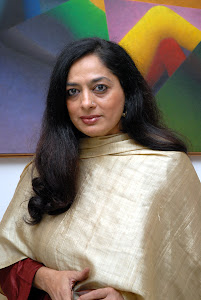Sadia Dehlvi
Over a year ago, an Afghan woman carrying a baby in her arms and wearing a headscarf was shot in the head by an American Latino while walking on the street in Freemont, California. She died leaving six small children behind. There was a march in her memory where the women of Freemont irrespective of religious faith walked in protest wearing headscarves. The incident illustrates what the hijab has come to mean today. In a world where Muslims are associated with terrorism and are the victims of hate crimes, more and more young Muslim women are adopting the hijab as an expression of defiance and an assertion of Islamic identity.
Hijab is usually discussed in the context of women. However the Quran clearly states in Surah Noor: “Say to the believing men that they should lower their gaze and guard their modesty: that we will make for greater purity for them: and Allah is well acquainted with all that they do.” Quran 24:30
The next verse says “and say to the believing women that they should lower their gaze and guard their modesty; that they should not display their beauty and ornaments except what appear therof; that they should draw their viels over their bosoms and not disply their beauty except to their husbands, their fathers, their husbands fathers, their sons…” Quran 24:31
The Quran also clearly states “Let there be no compulsion in religion: Truth stands out clear from error” Quran 2:256.
There is a tradition of the prophet where he asked the men to tell their women to cover their heads. Islam is based on the love of God and the Prophet Mohammad. Clearly, there can be no compulsion in love. Everything in Islam is based on intent. If one starves all day and does not intend to fast, the starvation does not give you the reward of a fast observed in the name of God. Similarly if a woman is forced into hijab or one who wears a designer turban and coat to make a fashion statement does not translate into hijab. The Prophet was gentle, polite, and never used force with any man or woman. Probhet Mohammad was often asked by his companions to define a perfect Muslim and each time he replied,” He amongst you who has the best moral character”. The essence of the Prophets teachings are a constant strive for inner perfection.
A woman must have the right to choose her dress code. The banning of headscarves for students in France is as oppressive as the Taliban forcing women into purdah. Last year seven states in Germany banned the hijab for teachers. In an attempt to be part of the European Union, Turkey has banned hijab for women in public institutions who are on the government payroll. In each case, it is the woman who is being used and has become the symbol of those who want to want to purify Islam or demonise it. Some European states have openly called the hijab a symbol of fundamentalism and extremism. Muslims around the world see the attack on hijab as a continuation of the onslaught against the Muslim World.
In Muslim societies from Egypt to Iran to Indonesia, many skilled professional women women wear the hijab as a matter of choice and should not be necessarily viewed as repressive. The hijab is often a matter of culture and tradition. In rural and traditional India women irrespective of their religions cover their heads. In the Muslim ghettos of India, they have little or no access to education or jobs, their faith is all they have and they cling to its symbols. The metro mindset now used to seeing almost obscene levels of fashion on film and television known confuses modernity with westernization. My grandmothers wore the burqa and yet they were very progressive. I have many cousins who are work as architects, doctors and lawyers while donning the headscarf and none of them are remotely oppressed.
What I find rather appalling is Indians accepting the Western notions of modernity while forgetting our own cultural legacy and notions of morality. Skimpily clad women on the ramp seem to prove that India has arrived on the world map. We have begun to view women who wish to cover their bodies as signs of obscurantism.
Sadly, Indian media is importing Western vocabulary, expressions and biases towards the Muslims. It is following the western media pattern of keeping the Muslims engaged in irrelevant issues. Soundbyte hungry journos rush to procure sensational statements from self proclaimed heads of the community which present opportunities for dialogues on the primitiveness of Muslim women. This deflects attention from the educational, structural, economic discriminations that millions of Indian Muslims face as a whole. The debate that should be taking up media space is where India has failed its Muslims and why is there gross under representation of the community in every field. The only place where Muslims are over represented are the jails. We need to focus our energies on corrective measures.
Tuesday, December 4, 2007
Subscribe to:
Comments (Atom)

